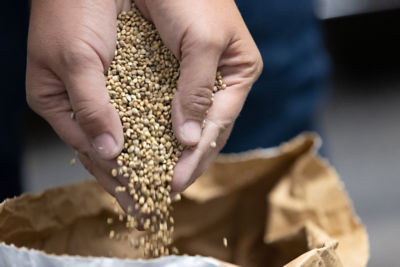Causal Agent
Corynespora cassiicola
Distribution
Worldwide
Symptoms
The disease can be found on all cucurbits, although it is most common on cucumber. The first symptoms appear on older leaves as angular, yellow spots. In the open field, these spots enlarge and become circular with light brown centers and dark brown borders. Later these large spots become gray and drop out, giving a shot-hole or shredded appearance to the leaf. Under greenhouse conditions spots have light centers with rings of olive green tissue and yellow borders. Eventually, defoliation can occur. Spots on stems and petioles are more elongated, which helps to distinguish this disease from other diseases, which include anthracnose, downy mildew or angular leaf spot. Early infection at the blossom end results in darkened, shriveled fruit. Root and flower infection can also occur.
 Leaf symptoms on cucumber. Note the angular appearance lesions, which may closely resemble other cucumber foliar diseases.
Leaf symptoms on cucumber. Note the angular appearance lesions, which may closely resemble other cucumber foliar diseases.
Conditions for Development
The fungus can exist on infected plant residue for at least two years, or on weed hosts. It is dispersed by air currents. Warm temperatures [25–35ºC (77–95ºF)] and long days are best for disease development, although infection takes place under humid and moderately cool temperatures [21–26ºC (70–80ºF)]. Also, fluctuating daily temperatures appear to favor disease development.
Control
Use resistant varieties when available. Implement a preventative fungicide spray program. In protected culture, good sanitation practices in and around structures will help avoid future infestations.



